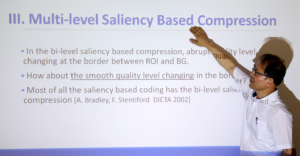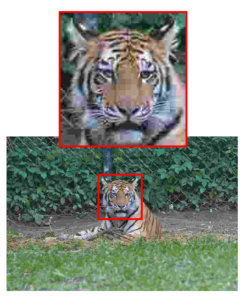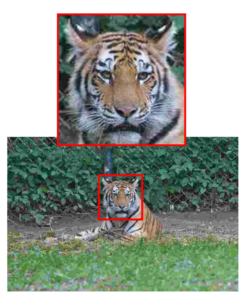Humans are the end users of visual media. Therefore, in order to develop an effective quantitative assessment of visual computing quality, one must take into account how humans perceive visual quality. For example, in image compression, an adaptive bitrate allocation that favors the image foreground can be expected to increase the visual quality of decoded images.
Our improvement of image compression is based on an eye tracking study of Judd et al “Learning to predict where humans look.”
Source: © Ryan Poplin, license https://creativecommons.org/licenses/by-sa/4.0/, changes by Judd et al “Learning to predict where humans look.”
During my research activities I found two approaches for image compression in order to better evaluate the potential of the adaptive coding idea:
- Firstly, I developed a bi-level saliency-based image compression based on foreground/background image segmentation. However, this approach has discontinuous visual quality at borders between foreground and background blocks.
- Secondly, in a multi-level saliency based approach, the bitrate is adapted block-wise and offers smooth visual quality.
In order to evaluate the proposed methods by subjective image quality assessment, a very large crowdsourcing study using pairwise comparisons was performed. The results show a significant improvement of subjective visual quality.
Source: © Ryan Poplin, license https://creativecommons.org/licenses/by-sa/4.0/, taken from database of Judd et al “Learning to predict where humans look.”, changes and enlargement of detail by Sung-Hwan Jung.

On 12th of July I presented my research in a talk at the University of Konstanz after I spent a sabattical year as a visiting scholar at the SFB-TRR 161. During my research stay I was part of project A05 and of the Multimedia Signal Processing Group of Prof. Dietmar Saupe, where I was involved on the subject of “Saliency based color image compression and evaluation”.
Thanks a lot for the great cooperation!





